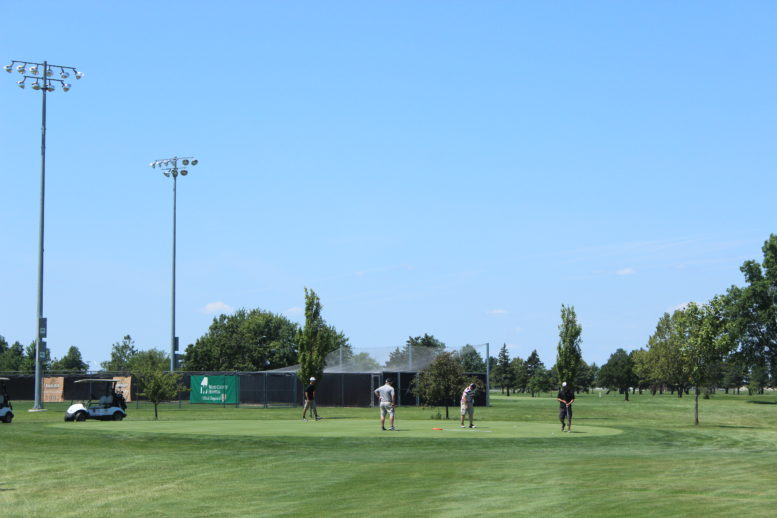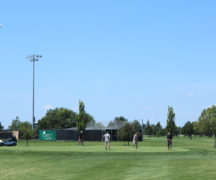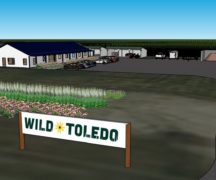By DAVID DUPONT
BG Independent News
A Perrysburg woman hoping to reverse Bowling Green State University’s decision to close the Forrest Creason Golf Course at the end of the current season.
The decision was announced in March. Cheryl Joyce, a 1986 BGSU alumni and retired WBGU-TV employee, said she was approached by a fellow member of the club who said something should be done convince university officials to change their minds about the fate of the course. A family issue prevented Joyce from acting then, but about a week ago, she launched a petition drive on change.org (see petition). The petition, addressed to BGSU President Mary Ellen Mazey and Chief Financial Officer Sherideen Stoll, has attracted 81 signatures as of Tuesday afternoon.
For Joyce, who started playing at the course 30 years ago, it is a treasure that merits more investment by BGSU, not closing. “It’s part of the community.”
People from college students to senior citizens use the course. “It’s busy,” she said. “It’s not as busy as it used to be, but it’s busy.”
Part of its appeal, she said, is that it’s an accessible course. “Forrest Creason is a great course for the average golfer. It’s not a high end country club where you have to dress to the nines to play golf.”
While it has its share of hazards, sand traps and water, those add to its appeal without making too difficult to play whether for a beginner, a senior citizen, or a woman, she said.
The course is where Joyce started playing golf in 1988 after she began working for BGSU. Now she runs two golf leagues at the course and volunteers in the clubhouse.
If that clubhouse could be updated, she said, it may help attract more golfers. Finding a way to control the geese, she said, would be another improvement.
Dave Kielmeyer, spokesman for BGSU, said that a consultant was hired to look at what the course needed. The consultant found it would require a $900,000 investment to bring it up to where it could be competitive, and then it would not be a break-even operation for at least five to seven years, Kielmeyer said. Those improvements would include outdoor shelter facilities, a new clubhouse with food service, and a new irrigation system.
Kielmeyer reiterated the university’s rationale for closing the course. The course is operating at a $120,000 deficit, and those keep building. “We cannot continue to ask our students to subsidize.”
Those students, the millennials, are less inclined to play golf studies have shown, Kielmeyer said.
Joyce said that isn’t borne out by the number of students she sees on the links. The course, she added, gives students an inexpensive way to start playing.
A study commissioned by the National Golf Foundation found millions of millennials do play golf, but their rate of participation is lower than for previous generations.
Alumni also use the course, Joyce said. Playing a round of golf as part of reunions and other get-togethers. For them the course is an important connection to the university. They choose to play at Forrest Creason rather than another course.
The university, Kielmeyer said, will work with groups to make other arrangements.
Kielmeyer said that between 2010 and 2016 the number of rounds played on the course has decreased by almost half from 22,000 to 11,576.
The discussions, he said, about the course’s future have been going on for about a decade. He said those discussions were “pretty common knowledge.”
He admitted “it’s been a struggle.” He didn’t know to what extent the membership of the club had been consulted but “frankly that’s not going to change the economics.”
“We understand that’s difficult for the people who play out there.”
The course has a student payroll of between $70,000 and $80,000. Kielmeyer said there would likely be new opportunities for those students, though he’s not sure at this point what those would be. That will in part hinge on what the university decides to do with the property. Public discussion on the future use of the acreage will take place in fall, he said.
The four full-time employees will be offered positions with campus operations.
“Certainly Forrest Creason has been an important part of our history, and many have fond memories of the course,” he said. In the end, though, “we made a decision that’s in the best interest of our students and university.”
Forrest Creason was built in 1965 as a nine-hole course, then expanded in 1972. It was the university’s second course. A nine-hole course was constructed in 1946 in the area now occupied by Kreisher and Harshman.




